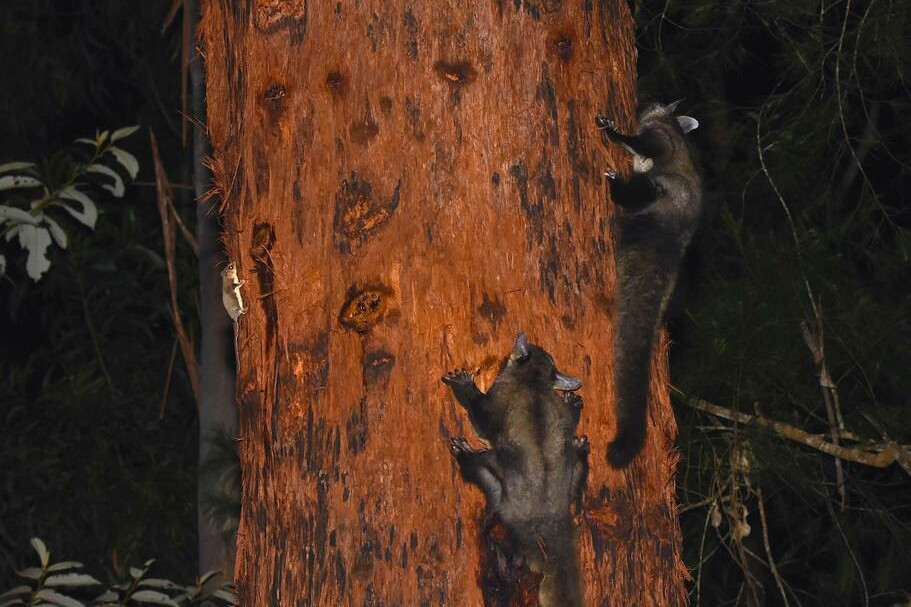Community & Business
26 June, 2022
A fluffy-tailed glider in our region: another mammal to cherish
Wonders of Wildlife with Peter Valentine

TWO species of eucalypts are critically important for our northern population of the Yellow-bellied Glider.
The first is their essential food tree, the Red Mahogany (Eucalyptus resinifera), a tall tree with thick fibrous and reddish bark, found mainly along the western margins of our rainforests.
Yellow- bellied Gliders, sometimes called Fluffy Gliders, use two specially shaped incisor teeth to cut chunks out of the bark.
The wounds from this attack create a flow of sugary sap that is licked up by the gliders.
Each food tree will be defended from intruders by the resident dominant male.
The second species provides the glider families with a home – a den in the hollows that are part of an ancient tree.
They seem to only use hollows in living trees so therefore live old trees are crucial and unfortunately not in good supply.
Our Fluffy Gliders make their dens in the hollows of the giant Rose Gums (Eucalyptus grandis) that also occur along the western margins of the rainforests.
Australian marsupial gliders are part of the large possum family of Australian mammals and they have astonishing skills that allow them to glide quite long distances from the top of one tall tree to the base of another.
As they spread their front and rear feet, the well-developed flap supports their weight as they glide from one tree to another.
Once on a tree they can quickly move up and down or along branches to find food.
In summer the Yellow-bellied Glider also enjoys feeding on cicadas, but its most important food source is the sap flow.
Other species of gliders sometimes help themselves to the flows including the tiny Feather-tailed Glider and the intermediate sized Sugar Glider.
There is significant concern about their survival due to the extensive clearing of their important food and den trees.
In recent years, there has been an ongoing program of monitoring of the populations in northern Queensland, initially begun by Rupert Russell of Mt Molloy and now being undertaken by the Tree Kangaroo and Mammal Group with community volunteers.
There is increasing involvement with Traditional Owners also.
Fluffy Gliders are very noisy animals, making loud calls, sometimes described as a high pitched shriek culminating in a distinctive throaty rattle sound.
Because of this it is now possible to monitor populations by using “song-meters” that automatically record the sounds of the night.
The TKMG has received a grant to purchase these song-meters and they have been applied to ongoing monitoring work.
It is relatively easy to find gliders in the right habitat if you know where to look and how to listen.
Any sighting is quite a treat as the animals arrive at their feed tree and start feeding.
Occasional disputes, mating behaviour and regular grooming of each other can provide an extended viewing.
As this species is a high elevation animal in northern Queensland, one of its emerging threats comes from expected climate change impacts.
Protecting their trees and avoiding climate change are key actions we need to take.
Peter Valentine is an adjunct Professor at James Cook University and he has spent much of the past 40 years studying wildlife in northern Queensland.



